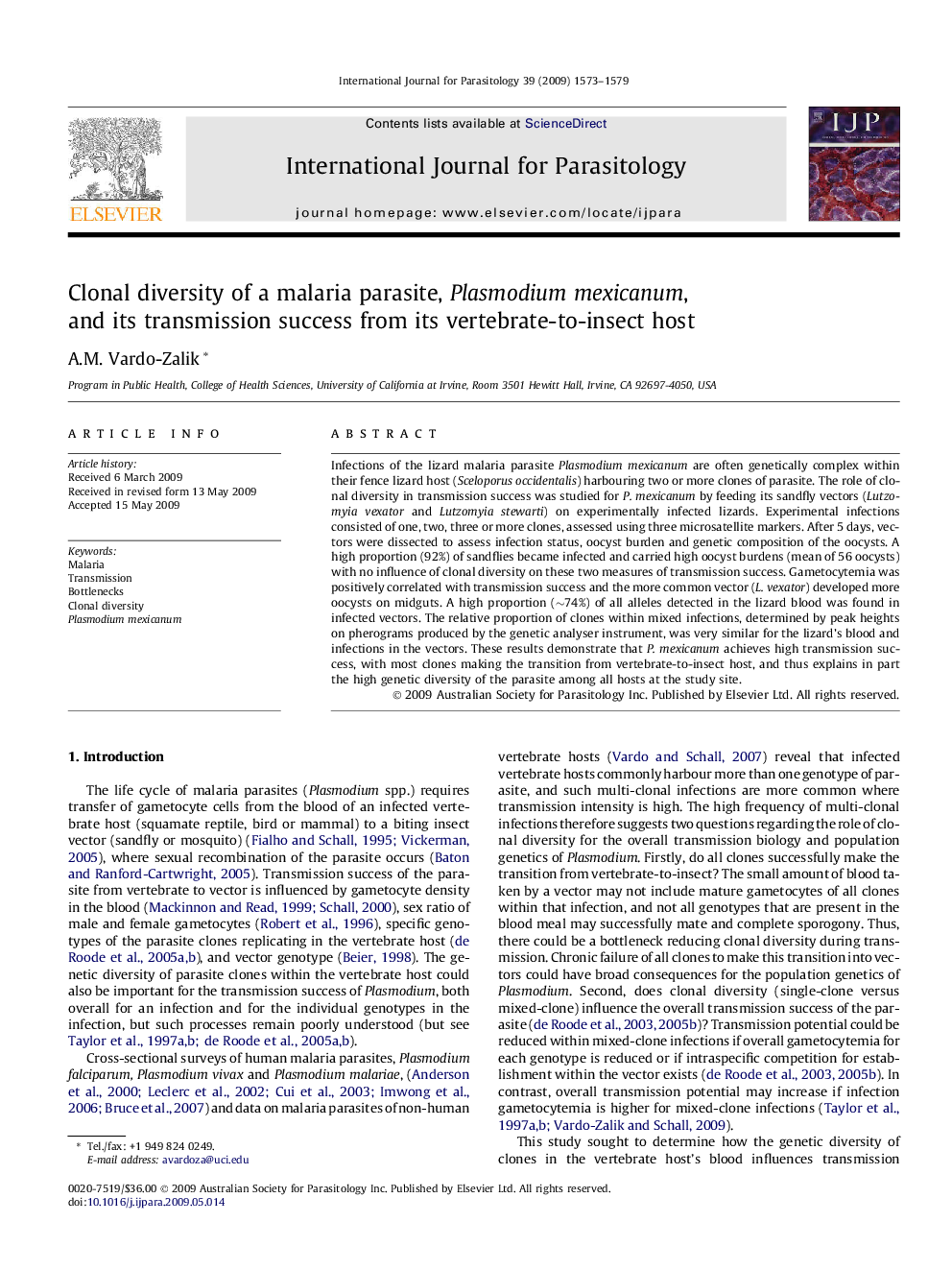| Article ID | Journal | Published Year | Pages | File Type |
|---|---|---|---|---|
| 2436677 | International Journal for Parasitology | 2009 | 7 Pages |
Infections of the lizard malaria parasite Plasmodium mexicanum are often genetically complex within their fence lizard host (Sceloporus occidentalis) harbouring two or more clones of parasite. The role of clonal diversity in transmission success was studied for P. mexicanum by feeding its sandfly vectors (Lutzomyia vexator and Lutzomyia stewarti) on experimentally infected lizards. Experimental infections consisted of one, two, three or more clones, assessed using three microsatellite markers. After 5 days, vectors were dissected to assess infection status, oocyst burden and genetic composition of the oocysts. A high proportion (92%) of sandflies became infected and carried high oocyst burdens (mean of 56 oocysts) with no influence of clonal diversity on these two measures of transmission success. Gametocytemia was positively correlated with transmission success and the more common vector (L. vexator) developed more oocysts on midguts. A high proportion (∼74%) of all alleles detected in the lizard blood was found in infected vectors. The relative proportion of clones within mixed infections, determined by peak heights on pherograms produced by the genetic analyser instrument, was very similar for the lizard’s blood and infections in the vectors. These results demonstrate that P. mexicanum achieves high transmission success, with most clones making the transition from vertebrate-to-insect host, and thus explains in part the high genetic diversity of the parasite among all hosts at the study site.
